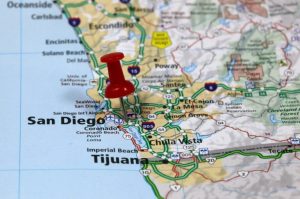
Incremental cost includes a cost-to-benefit analysis to guide businesses in smartly choosing battles. If you increase your output to 15,000 shirts at a total cost of $120,000, your incremental cost will be $20,000. This means the $20,000 additional cost will produce 5,000 extra units on your product line. Incremental costing helps evaluate the impact on patient care and financial sustainability. Remember, incremental cost isn’t just about numbers; it’s about informed choices. Whether you’re optimizing production, launching a new product, or allocating resources, understanding incremental cost empowers better decision-making.
What Do Incremental Costs Include?
This is an example of economies of scale, or the cost advantage companies get when production becomes efficient. And the more units sold at marginal cost, the higher its contribution to the net income. Suppose the retail chain estimates that the online platform will generate an additional $100,000 in annual revenue. The incremental cost of $20,000 seems justified given the potential benefits. Remember, identifying relevant costs requires a holistic approach, considering both short-term and long-term implications.
- Some ventures waste time and resources, and calculating the incremental cost versus projected sales at a particular volume avoids that.
- When it comes to decision-making, comparing the benefits and costs of different options is crucial.
- If a reduced price is established for a special order, then it’s critical that the revenue received from the special order at least covers the incremental costs.
- Implementing comprehensive tracking systems to monitor expenses aids in identifying inefficiencies and cutting unnecessary costs.
How to Properly Record Accrued Revenue for Your Business
In other words, incremental costs are exclusively determined by the amount of output. Fixed costs, such as rent and overhead, are excluded from incremental cost analysis since they normally do not vary with output quantities. Furthermore, fixed costs can be difficult to allocate to a certain business area. Alternatively, once incremental costs exceed incremental revenue for a unit, the company takes a loss for each item produced.
- This includes business rates (a tax specific to commercial properties), property insurance, and any council-imposed fees.
- In other words, incremental costs are exclusively determined by the amount of output.
- The calculation is critical for financial planning, accounting and understanding your costs, margins and profitability at different levels of production.
- In summary, incremental cost empowers us to make informed choices, optimize resource allocation, and navigate complex decision landscapes.
- Like in the above example, it is evident that the per-unit cost of manufacturing the products has decreased from ₹ 20 to ₹ 17.5 after introducing the new product line.
Examples of Incremental Cost Calculations
The incremental cost of offering a free coffee after https://www.bookstime.com/articles/incremental-cost ten purchases includes the coffee beans and milk. But the incremental benefit—customer retention and word-of-mouth marketing—far outweighs this cost. Remember that incremental cost analysis should consider both short-term and long-term effects.

- In this section, we will delve into the concept of incremental cost and its significance in decision making.
- For example, when the 2,000 additional units are manufactured most fixed costs will not change in total although a few fixed costs could increase.
- Understanding a company’s incremental costs is important for decisions like setting pricing, production levels, make vs. buy, adding product features, and more.
- Economies of scale show that companies with efficient and high production capacity can lower their costs, but this is not always the case.
- Keep a spreadsheet with incremental costs noted against different levels of production.
- Remember, identifying relevant costs requires a holistic approach, considering both short-term and long-term implications.
As seen in Case 2, incremental cost increased significantly by $55,000 to produce 5,000 more units of tobacco. This happens in the real world as prices of raw materials change depending on the quantity bought from suppliers. Here are some incremental cost examples based on different scales of production. The first step in calculating the incremental cost is determining how many units you want to add to your normal production capacity.

Therefore, knowing the incremental cost of additional units of production and comparing it with the selling price of these goods assists in meeting profit goals. In summary, incremental cost empowers us to make informed choices, optimize resource allocation, and navigate complex decision landscapes. Whether you’re optimizing production, pricing, or investment, understanding incremental cost is your compass in the sea of choices.
Incremental Cost: Definition, How to Calculate, and Examples

Incremental cost, often referred to as “marginal cost,” represents the change bookkeeping in total cost resulting from producing one additional unit of a product or service. It’s the cost incurred beyond the status quo—a shift from the familiar to the slightly altered. By comparing these incremental costs with the expected benefits (increased production, higher sales, etc.), the company can determine whether the expansion is financially viable.

These factors may include changes in production volume, material costs, labor expenses, overhead costs, and any other relevant cost drivers. By identifying and analyzing these factors, businesses can gain insights into the potential incremental cost cost implications of their decisions. Understanding incremental cost is vital for effective decision making and cost-benefit analysis.
